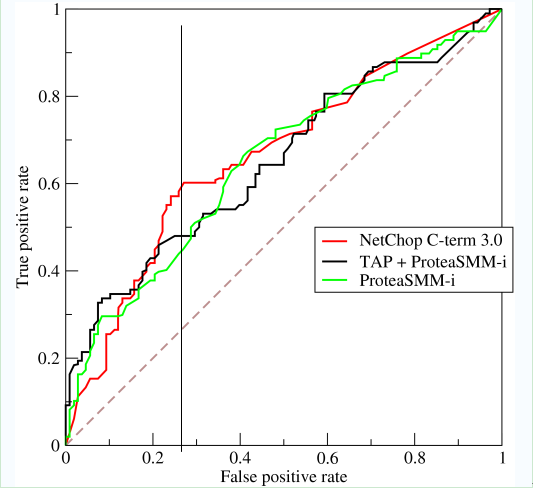Deep Learning 基础 – 混淆矩阵、准确率、召回率、F1-Score
Tags: Deep_Learning
本文主要包含如下内容:
混淆矩阵、准确率、召回率、F1-Score
混淆矩阵
| 真实情况 | 预测结果 | |
|---|---|---|
| 正例 | 反例 | |
| 正例 | TP(真正例) | FN(假反例) |
| 反例 | FP(假正例) | TN(真反例) |
TP:真阳(真正例),指被分类器正确分类的正例数据
TN:真阴(真反例),指被分类器正确分类的负例数据
FP:假阳(假正例),被错误地标记为正例数据的负例数据
FN:假阴(假反例),被错误地标记为负例数据的正例数据
显然:TP+FP+TN+FN = 样本总数
准确率、召回率
accuracy = (TP+TN)/TP+FP+TN+FN
查准率 = 精度 = precision = TP/(TP+FP) : 模型预测为正类的样本中,真正为正类的样本所占的比例
查全率 = 召回率 = recall = TP/(TP+FN) : 模型正确预测为正类的样本的数量,占总的正类样本数量的比值
一般来说,查准率高时,查全率往往偏低;查全率高时,查准率往往偏低。
P-R曲线、F1-Score
P-R曲线:查准率-查全率曲线:precision为纵轴,recall为横轴

根据P-R曲线的性能度量方式:
第一种: 若学习器的P-R曲线被另一个学习器完全“包住”,则后者的性能优于前者;
第二种: 若两个学习器的P-R曲线发生了交叉,可以运用平衡点(Break-Even Point,BEP),即根据在“查准率=查全率”时的取值,判断学习器性能的好坏。
第三种: 若两个学习器的P-R曲线发生了交叉,亦可以使用F1/F_\beta度量,分别表示查准率和查全率的调和平均和加权调和平均。其中,F2分数中,召回率的权重高于准确率,而F0.5分数中,准确率的权重高于召回率。 F_\beta的物理意义就是将准确率和召回率这两个分值合并为一个分值,在合并的过程中,召回率的权重是准确率的\beta倍。F1分数认为召回率和准确率同等重要,F2分数认为召回率的重要程度是准确率的2倍,而F0.5分数认为召回率的重要程度是准确率的一半。
第四种: 若两个学习器的P-R曲线发生了交叉,亦可以使用AP\MAP:即计算P-R曲线下的面积
| 准确率 | 召回率 | |
|---|---|---|
| A | 80% | 90% |
| B | 90% | 80% |
在上述表格的情况下,A/B的F1-Score是一样,因此,考虑 加以区分,根据实际情况,选择准确率比重大还是召回率比重大。
AP、MAP
AP(Average Precision),即平均精确度, P-R曲线下的面积 :记
,
, 则
, 实际采用:其中,M为测试集中正样本的数量
MAP:各类AP的算术平均,所有结果排序的AP平均
检测与分类:绘制PR曲线时,分类任务取不同的score置信度阈值(confidencethresholds),检测任务取不同的IOU阈值
TPR、FPR、TNR
真正例率 = true positive rate = sensitivity = TPR = TP/(TP+FN) : 同recall
假正例率 = false positive rate = FPR = FP/(FP+TN) : 模型错分为正类的负样本,占总的负样本数量的比值
真负类率 = rue Negative Rate = specificity = TNR = 1 - FPR
ROC、AUC
ROC曲线,全称是受试者工作特征(Recevier Operating Characteristic):以TPR为纵轴,FPR为横轴。
使用情况:在类别严重不平衡的情况下(现实中样本在不同类别上的不均衡分布(class distribution imbalance problem)),Precision和Recall无法准确刻画模型性能,此时P-R曲线度量没有意义。如正样本99个,负样本1个,直接把所有样本分类为正样本,识别率即可达到99%。此时引入ROC曲线,一般希望TPR较高,FPR较低。
对某个分类器而言,我们可以根据模型在测试样本上的表现得到TPR和FPR点对,调整分类器分类时使用的阈值,可以得到一个经过(0,0)、(1,1)的曲线,这就是ROC曲线。 其中,将(0, 0)和(1, 1)连线形成的ROC曲线实际上代表的是一个随机分类器。

根据ROC曲线的性能度量方式:
第一种: 若学习器的ROC曲线被另一个学习器完全“包住”,则后者的性能优于前者;
第二种: 若两个学习器的ROC曲线发生了交叉,可以计算ROC曲线下的面积,即AUC(Area Under ROC Curve)。
AUC(Area Under ROC Curve):ROC曲线下的面积;其中,1为完美分类器,0.5为随机猜测
AUC值的定义:
AUC值为ROC曲线所覆盖的区域面积,显然,AUC越大,分类器分类效果越好。
AUC = 1,是完美分类器,采用这个预测模型时,不管设定什么阈值都能得出完美预测。绝大多数预测的场合,不存在完美分类器。
0.5 < AUC < 1,优于随机猜测。这个分类器(模型)妥善设定阈值的话,能有预测价值。
AUC = 0.5,跟随机猜测一样(例:丢铜板),模型没有预测价值。
AUC < 0.5,比随机猜测还差;但只要总是反预测而行,就优于随机猜测。
AUC值的物理意义:假设分类器的输出是样本属于正类的socre(置信度),则AUC的物理意义为,任取一对(正、负)样本,正样本的score大于负样本的score的概率 (score指样本属于正例的概率)
新写python层计算混淆矩阵
编写相应的 python layer,在caffe中调用该层,即可得到相应的输出,得到想要的混淆矩阵计算结果。
import caffe
import json
import numpy as np
import sys
import sklearn.metrics
class PythonConfMat(caffe.Layer):
"""
Compute the ConfMat with a Python Layer
"""
def setup(self, bottom, top):
# check input pair
if len(bottom) != 2: # 检查输入 bottom 是否有两个
raise Exception("Need two inputs to compute ConfMat.")
self.num_labels = bottom[0].channels # 获得 bottom[0] 的通道数
params = json.loads(self.param_str)
self.test_iter = params['test_iter'] # 获得测试集的迭代次数(这里使用 json.loads )
self.conf_matrix = np.zeros((self.num_labels, self.num_labels)) # 定义混淆矩阵,维度为分类类别
self.current_iter = 0 # 当前迭代次数
def reshape(self, bottom, top):
# bottom[0] are the net's outputs
# bottom[1] are the ground truth labels
# Net outputs and labels must have the same number of elements
if bottom[0].num != bottom[1].num:
raise Exception("Inputs must have the same number of elements.")
# accuracy output is scalar
top[0].reshape(1) # 输出准确率,对应一个输出
def forward(self, bottom, top): # 前向传播
self.current_iter += 1 # 当前迭代次数 +1
# predicted outputs
pred = np.argmax(bottom[0].data, axis=1) # 预测输出,获取预测类别的标签
accuracy = np.sum(pred == bottom[1].data).astype(np.float32) / bottom[0].num # 计算准确率(对应batch)
top[0].data[...] = accuracy
# compute confusion matrix
self.conf_matrix += sklearn.metrics.confusion_matrix(bottom[1].data, pred, labels=range(self.num_labels)) # 混淆矩阵对应位置 +1
if self.current_iter == self.test_iter: # 打印输出
self.current_iter = 0
sys.stdout.write('\nCAUTION!! test_iter = %i. Make sure this is the correct value' % self.test_iter)
sys.stdout.write('\n"param_str: \'{"test_iter":%i}\'" has been set in the definition of the PythonLayer' % self.test_iter)
sys.stdout.write('\n\nConfusion Matrix')
sys.stdout.write('\t'*(self.num_labels-2)+'| Accuracy')
sys.stdout.write('\n'+'-'*8*(self.num_labels+1))
sys.stdout.write('\n')
for i in range(len(self.conf_matrix)):
for j in range(len(self.conf_matrix[i])):
sys.stdout.write(str(self.conf_matrix[i][j].astype(np.int))+'\t')
sys.stdout.write('| %3.2f %%' % (self.conf_matrix[i][i]*100 / self.conf_matrix[i].sum()))
sys.stdout.write('\n')
sys.stdout.write('Number of test samples: %i \n\n' % self.conf_matrix.sum())
# reset conf_matrix for next test phase
self.conf_matrix = np.zeros((self.num_labels, self.num_labels))
def backward(self, top, propagate_down, bottom): # 不需要定义反向传播
pass